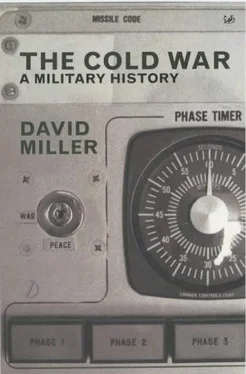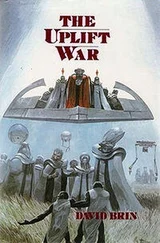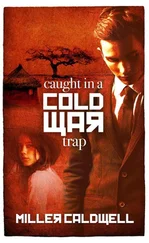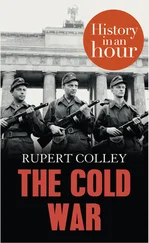Oahu, Hawaii, 76n
Ostpolitik (policy), 28
Palestine: under British mandate, 16–17; see also Israel
Papadopoulos, Colonel Georgios, 37
paratroop units see airborne troops
Partial Test Ban Treaty (1963), 81
Pavlovsky, General I. G., 39
Peacekeeper (MX) missile, 98, 105, 108, 115
Pershing missile, 30, 42–4, 94
Pétain, Marshal Henri Philippe, 33
Petkov, Nikola, 6
Poland: ethnic Germans in, 6; Communist government in, 7; 1970 German Treaty, 28; Solidarity trade-union movement, 29; in Warsaw Pact, 55; naval shipbuilding, 56, 182–3, 226; riots (1956), 57–8, 62, 67; crisis of 1980–1, 62–4; navy, 181–3; amphibious capability, 226; Warsaw Pact forces in, 252–3; military forces, 253–4; airborne troops, 256; armoured personnel carriers, 279; air force and aircraft, 308, 315–16; and Warsaw Pact attack plan, 361–2
Polaris submarine missile system, 111–12, 114–16, 139–41, 200, 206, 364
Portugal: and membership of NATO, 21; 1974 coup, 37; navy, 171; submarines, 195; amphibious forces, 227; airborne troops, 242
Poseidon submarine missile system, 112, 114, 141, 158
Potsdam Conference (1945), 3, 6
Poznán, Poland, 57–8, 62, 67
‘Prague Spring’ (1968), 59
pre-emptive attacks (nuclear), 78–9
Project E, 137–8, 140
Queuille, Henri, 21
Quick Reaction Alert (QRA; bomber aircraft), 133
Raborn, Rear-Admiral William, 111, 113
radiation see residual nuclear radiation; thermal radiation
Rákosi, Mátyás, 57–8
Ramadier, Paul, 21
Ramstein, Germany, 51, 297, 335
ranks (military), 401
re-entry vehicles (RVs), 92–3
Reagan, Ronald: presidency (1981), 30; and deterrence, 84; and B-1B bomber, 127; and battleships, 218; strengthens Marine Corps, 224; and resort to war, 386
refugees (‘displaced persons’), 5–6, 9, 246
Regulus cruise-missile, 111, 113, 191
residual nuclear radiation (fallout), 75–6, 80–1
Resolution (UK submarine), 140–1
Reykjavik: Reagan-Gorbachev meeting (1986), 30
Rheindahlen, Germany, 238
Rickover, Admiral Hyman, 165 & n, 185
Rigel missile, 111
Robb, Air Chief Marshal Sir James, 12, 392
Rokossovsky, Marshal Konstantin, 54, 62
Roman Catholic Church: supports nuclear deterrence, 36; anti-Communism in eastern Europe, 67
Romania: as Soviet satellite, 4; Communist government in, 7–8, 65; 1946–7 peace settlement, 9; troop levels, 31; in Warsaw Pact, 55, 66; breach with USSR, 65–6; in World War II, 65; military resources, 66; 1989 collapse, 67; navy, 181, 183; airborne troops, 256
Rome: NATO Defence College, 35
Royal Air Force (Germany) (UK), 299–300
Royal Observer Corps (UK), 152 & n
Rozhdestvensky, Admiral Zinovy P., 175
Rügen island (Baltic), 63, 64n
Rusk, Dean, 65
Russo-Japanese War (1904–5), 175n
San Juan (US submarine), 186
Sarajevo: 1914 assassination, 326
satellites: and NATO communications, 52; and navigation systems, 112; monitoring of enemy movements, 123
Sazan naval base, Albania, 65, 181
Scandinavia: and potential Soviet threat, 13
Schlieffen Plan, 326
Schmidt, Helmut, 42
Scorpion (US submarine), 186
Seawolf (US submarine), 185
self-propelled guns, 282–5
silos, 103–6
Single Integrated Operation Plan (SIOP), 364–6
single-shot kill probability (SSKP), 158–9
Sirte, Gulf of (Libya), 210
Six-Day War (1967), 178
Snark pilotless bomber, 95
Sokolovskiy, Marshal V. D., 85, 206, 255, 320, 331, 347
Soviet Military Power : first issued (1981), 29
Soviet Naval Infantry, 226–7
Soviet navy: submarine missile systems and strategy, 117–23, 158, 178, 206–7, 213, 411–12; submarine types and classes, 117, 119–21, 206, 409–10; development and strength, 164, 166, 174–7, 213, 425; activities and exercises, 177–81; battleships, 177, 217; nuclear submarines, 187–8, 429; diesel-electric submarines, 191–3, 430; aircraft carriers, 196, 204–5; anti-carrier warfare, 206–7; surface warships, 212–13; amphibious landings, 223; manning, 324
Soviet Union: bomber-aircraft threat, 3–7, 303; post-war disagreements with Allies, 3; post-war power and position, 4–6; territorial defence and satellites, 4, 6; ethnic transportations, 5; and administration of Berlin, 9, 328–33, 336, 339–41; Berlin blockade, 9, 332–3, 338; controls eastern Europe, 9, 13; and Brussels Treaty, 12; expansionist policy, 17–18; forms and dominates Warsaw Pact, 26, 54–6; invades Hungary (1956), 26, 37, 57–9; shoots down US spy plane, 26; 1970 German Treaty, 28; claims right of intervention in eastern Europe, 28; invades Afghanistan, 29; attack strategy, 30, 361; troop reductions (1989), 31; withdraws from Afghanistan, 31; forces deployed in Czechoslovakia (1968), 38, 40; deploys SS-20 missiles, 40–3; as nuclear power, 47; troops in Warsaw Pact countries, 55–6; withholds nuclear weapons from Warsaw Pact allies, 57; and Polish unrest (1980–1), 62–4; troops withdraw from Czechoslovakia and Hungary (1990), 67; western republics declare independence from (1990–1), 67; nuclear testing, 80–1, 405; nuclear strategy, 85–90, 366, 386; World War II casualties, 86, 373; nuclear targets in, 91, 364–5, 441–2; ICBM development, 98–102; strategic missiles, 98–102, 422–4; strategic bombers, 127–30, 414; targeted by China, 147; civil defence, 149–51; deployment of forces in Europe, 250–6; airborne troops, 254–6; battle tanks, 258–9, 262–5, 268, 272–4, 435–6; infantry carriers, 278–9; field artillery, 283–6, 437; air-defence missiles and guns, 288–91; aircraft development, 312–16; air force, 314–15; mobilization plans, 324; battlefield nuclear weapons, 353, 355, 440; in US nuclear strategy, 363–4, 441–2; effects of nuclear attacks on, 370–5; procurement and financing, 381–2; land-based missiles, 407–8; sea-launched ballistic missiles, 409–10; nuclear submarine accidents, 426–8; see also Warsaw Pact
Spain: membership of NATO, 22, 29–30, 243; and NATO command structure, 50; navy, 171, 198n; submarines, 195; marines, 227; airborne troops, 242; tanks, 270n
Spanish Civil War (1936–9), 81n
Spínola, General Antonio, 37
SS missiles (USSR), 30, 40–4, 98–102, 105–6, 108, 117, 145–6, 207, 353, 366, 384
SS-N missiles (USSR), 116n, 117–22, 158, 178, 206–7, 213
SSBNs see submarines: ballistic, nuclear
Stalin, Josef V.: 1946 Five-Year Plan, 4; defence obsession, 6; and Yugoslavia, 8; and Finnish treaty, 17; and US threat, 54; split with Tito, 64; builds up fleet, 217
stand-off missiles, 130–2
Strategic Air Command (USA), 125–6, 132–4, 139
Strategic Arms Limitation Talks (SALT): Round I, 28, 112; Round II, 28, 41–2; and Soviet missiles, 100, 102; and strategic bombers, 129
Strategic Defense Initiative (SDI; ‘Star Wars’), 30
submarine-launched ballistic missiles (SLBMs): launching, 88–9, 113–17, 158; German, 110, 169; US, 110–17, 409–11; Soviet, 117–23, 158, 178, 206–7, 213, 411–12; British, 140–1, 418; French, 143–4, 418; Chinese, 147, 418; reliability, 158; and nuclear balance, 159–60; in anti-carrier warfare, 206–7
submarines: ballistic, nuclear (SSBNs), 88–9, 91, 93, 110, 123; in nuclear strikes, 88; German (U-boats), 110, 164, 169, 184, 190, 192–4; US types and classes, 110–15, 409–10; diesel-electric, 117, 119, 190–5, 211, 430; Soviet types and classes, 117, 119–21, 206, 409–10; miniature (X-craft), 121n, 194; British, 140–1, 418; availability, 156–7; Soviet strength, 164–5, 211, 429–30; countermeasures against, 165, 191, 210–12; nuclear-powered, 165, 184–9; Romanian, 183; accidents (nuclear), 426–8; see also submarine-launched ballistic missiles
Читать дальше












